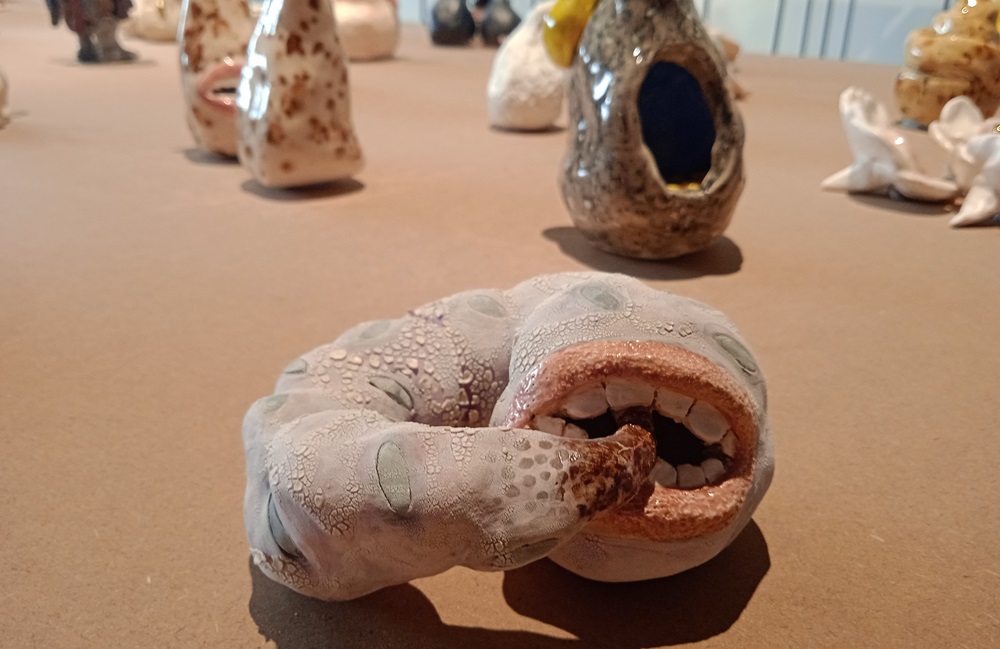In an essay titled ‘I object to your position: hyperreal decontextualizing of objects, scholar Ana Calvete write about the hyperreal presence of objects in our lives. Hyperreality or surrealism is blended with reality, dreams, and daily life no matter the subject of art and creative process in our contemporary lives. In that essay, Ana Calvete argued, ‘the phenomenon of hyperreality, which came as the offspring of technological advances, mass consumption and globalization that accompanied late capitalism, allows us to assess the individual’s lack of control over their environment’.
In an ongoing Indian Ceramics Triennale, artist Dhruvi Achary displays her recent works, titled ‘101 Reflections’, encapsulating the ideas of surrounding reflections and other stories of the artist and the objects. In 101 Reflections, the artist brings the nature of the objects with a surrealistic visual interpretation: objects from our daily lives are caricaturing or mimicking themselves with a discomfiting performance. Most objects lost their real nature, and artists reinterpreted them for visual appeal or utility, neither adding complexity to our time for them. Dhruvi Acharya’s objects performed their role excellently in an abstract physique and evolved into a playful object for the world of engagement.
The context of hyperreality and surrealism, as stated by Ana Calvete, ‘appears to result from a movement generated by capitalism and globalization, which causes the extraction of cultural objects from their original contexts and reframes within new ones’. In this exhibition, artist Dhruvi Achary brings back the objects into a visual language that hides in the souls of the objects eternally, and we need to conceive that from them.
Dhruvi Achary: Profile of an Artist
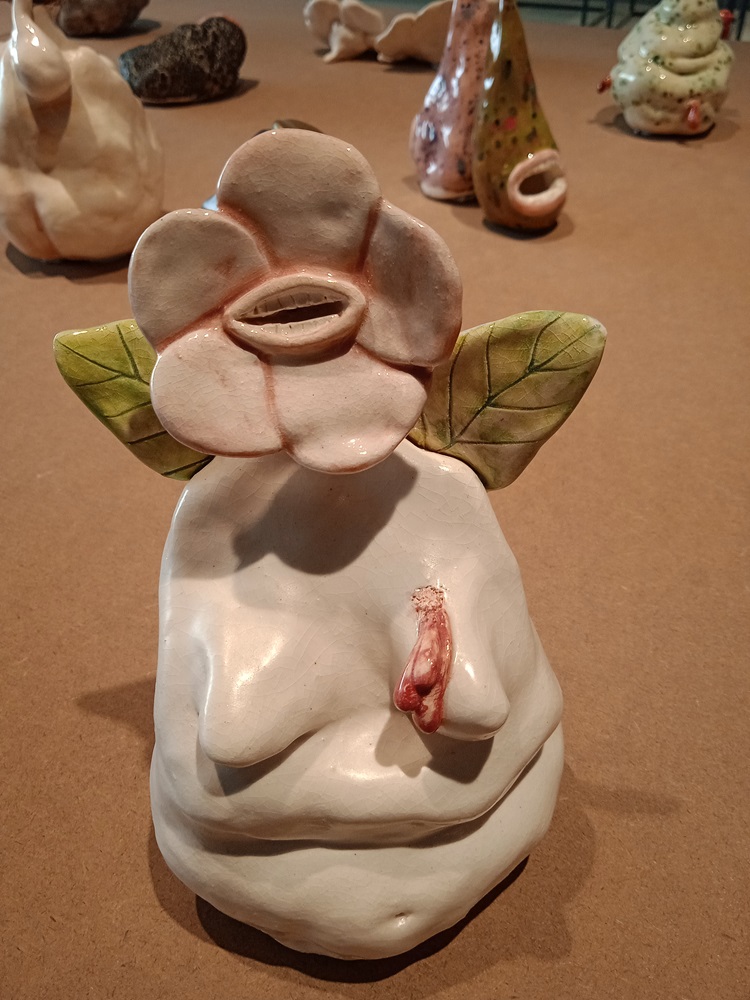
In a world entire of conflict, murder, and pollution, Dhruvi Acharya’s work crystallizes the psychological and emotional segments of an urban woman’s life. In this reflection, Dhruvi Acharya tries to reconnect with the world in which we lost the meaningfulness of the objects, things and our material life. Dhruvi is primarily a painter, but in 2021, while living in New York, she started doing ceramic work.
Dhruvi graduated with an MFA from the Maryland Institute College of Art’s Hoffberger School in the United States. Her artwork has been shown in several museums and galleries, including the Queens Museum in New York, the San Jose Museum, Griffith University in Brisbane, Webster University in St. Louis, CSMVS & NGMA in Mumbai, and Spazio Oberdan in Milan. She now resides and works in Mumbai after nine years in the United States.
The artist is aware of significant issues like gender inequality, air pollution, and climate change, and at the same time, as women, there are other substantial and minor physical and mental changes; her art reflects those two worlds. As per Dhruvi, her initial works didn’t have any characteristic of a sense of humour, but that element is added as a quality of the characters from the surrounding world. Artists like Takashi Murakami and Lari Pittman influenced Dhruvi Acharya, and they beautifully deceptively piqued her interest and made her ponder the subjects.
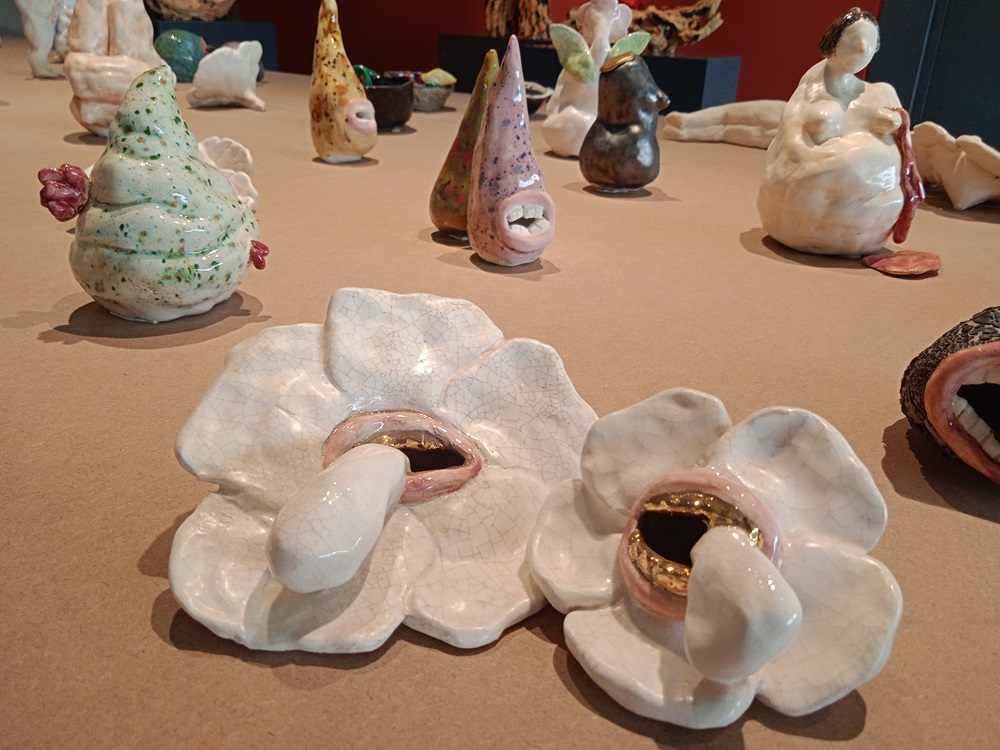
Dhruvi’s artwork changed objects’ perspectives entirely, giving them minor transformations or adding something more to their character that made them immortal. In this project, 101 Reflections, Dhruvi recontextualizing the object from the reflected world to be placed in a hyperreal context and to compose their hyperreal context, and let them create and encapsulate hyperreality or even idealizing the repetition of reimagined reality. The context in Dhruvi Acharya’s work, as stated by Ana Calvete, ‘will be understood as the physical elements surrounding cultural objects, such as neighbouring objects and the fictional or historical origin associated with the objects, even if this origin is geographical or historically remote, and even if the original they hint at has been destroyed by the centuries’.
Coffee cups, flowers, different boxes, people, birds, flower vases, and many other objects from her home and surroundings are remodelled with the artist’s intricate thoughts. In this exhibition, as mentioned in the artistic note, 101 objects represent her ideas that were carried out from her paintings.
Through these works, artists give the human predicament a formal voice and a surrealistic narrative. Our ageing-related dependence on the natural systems of which our bodies are a part. Shouting flowers demand that humans stop driving flora and fauna to extinction, while cooking pots demonstrate our dependence on them. A bed with nails represents the death of a loved one, while a commode chair represents the aged and sick. However, there’s also a joyful component. In defiance of the objectification and shame they endure, voluptuous feminine bodies occupy space. Acharya used comedy and whimsy in her installation to highlight the cycle of life, death, and perseverance; this created a space for contemplation on individual and communal experiences.
101 Reflections and Other ‘Surreal’ Life
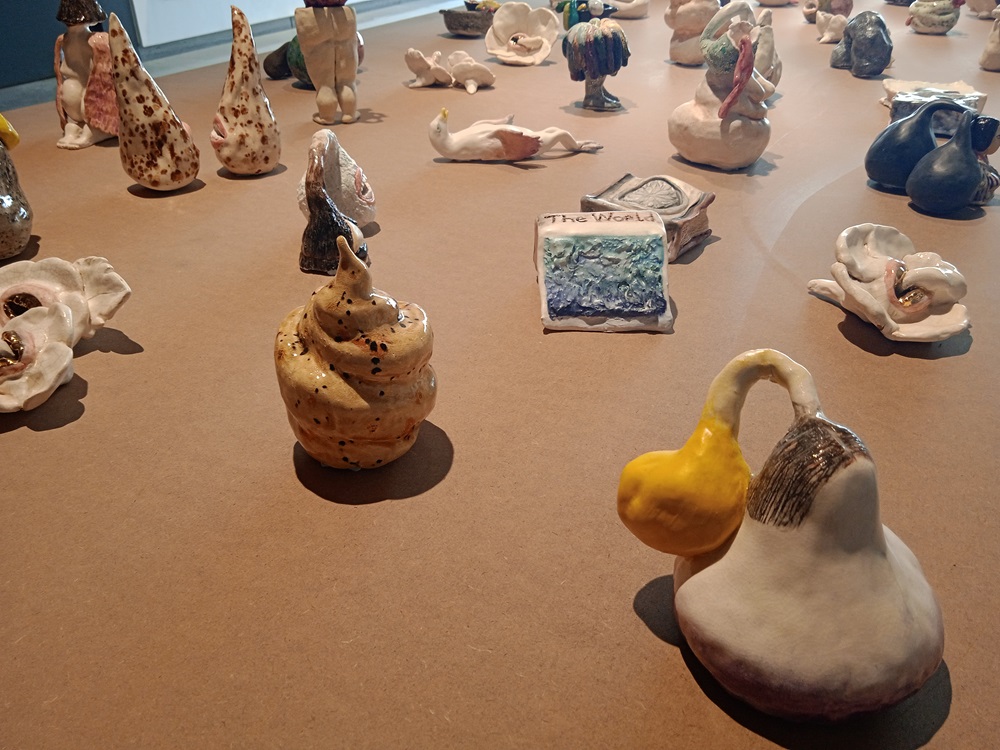
The psychological and emotional components of an urban woman’s life in a world full of conflict, injustices, gender inequality, violence, and natural disasters are the emphasis of Dhruvi Acharya’s work. The viewer is invited to assess their value based on their geographical and earthly root, the name of their designer, and their position on a hierarchy of imagination. She creates artistically and psychologically nuanced pieces reflecting our thoughts’ optimism, empathy, and courage, often using subtle, dark, and sarcastic humour to confront these problematic subjects.
In her artwork, she imagines a universe in which speech bubbles and empty thoughts, reminiscent of comic books, represent indescribable feelings, and human forms change to reflect a person’s mental condition. Her characters live in a universe where the past, present, and projected futures coexist. The intricate details in the paintings entice spectators to consider their feelings and experiences, rendering each image’s significance and the storey’s details irrelevant and facilitating reflection on our shared humanity.
By delving into dreams, fancies, and the uncharted depths of the unconscious and attempting to access the irrational and subconscious parts of the human mind, Dhruvi Acharya sought to free their creative expressions from the confines of reason and logic. By blending unexpected components, juxtaposing unconnected pictures, and producing dreamy compositions that defied traditional representation, artists abandoned established approaches and pursued novel methods.
With this endeavour, Dhruvi Acharya critiques governmental systems, societal conventions, and the human condition via art, frequently using symbolic and surreal images to make her points. Artists are encouraged to explore their visions through an interdisciplinary mindset, allowing for various styles and techniques within the movement. Focusing on breaking free from traditional thinking cleared the way for a more creative and open approach to self-expression. Its goal was to delve into the depths of the unconscious mind, drawing on the concepts of irrational and subconscious.
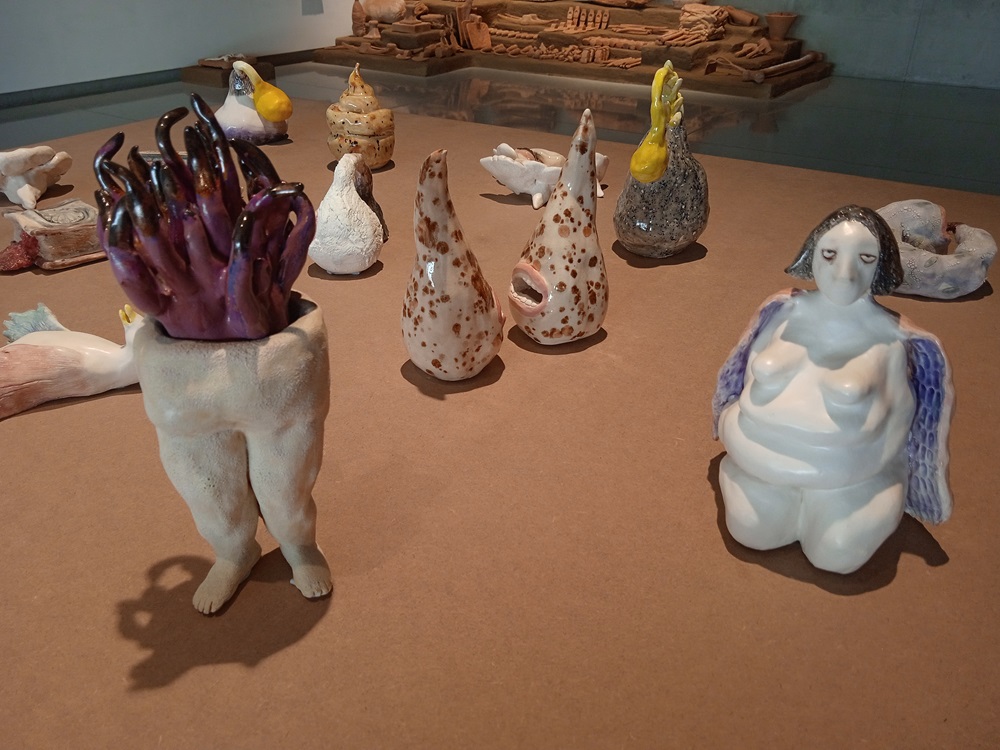
Surrealism’s Dhruvi Acha promoted the fusion of seemingly incongruous ideas in art and philosophy. In addition to encouraging a more nuanced and comprehensive understanding of reality by challenging the binary distinctions frequently found in traditional thinking, this approach also embraced symbolism to communicate on a level beyond the literal, enticing viewers and thinkers to explore the layers of meaning embedded.
Beyond the arts, Dhruvi Acharya impacted philosophy, psychology, and literature, promoted interdisciplinary cooperation and developed concepts that cut across conventional disciplinary boundaries. The essence of Dhruvi’s work, surrealism, entails adding magical, irrational, and dreamlike components to ceramic creations. Artists in this medium utilize clay’s malleability and the firing process to realize unique and innovative concepts. Clay is a medium that artists frequently use to produce unusual and magical forms. It also makes it possible to recognize dreamy designs that would be challenging or impossible to achieve in other media. Symbolism and metaphor are essential in surrealist ceramic work, as in other media.
Artists delve into the unconscious and irrational worlds and convey deeper meanings through symbolic motifs. They frequently contrast dissimilar elements, combining pictures or things that wouldn’t usually go together to startle and subvert the viewer’s assumptions.
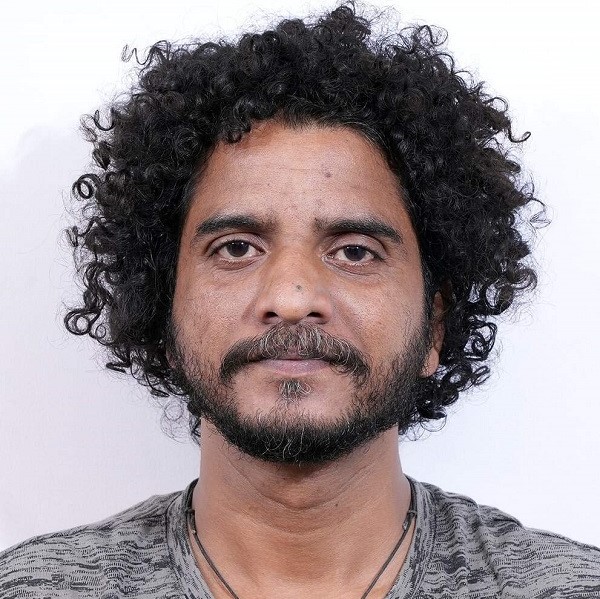
Krispin Joseph PX, a poet and journalist, completed an MFA in art history and visual studies at the University of Hyderabad.

